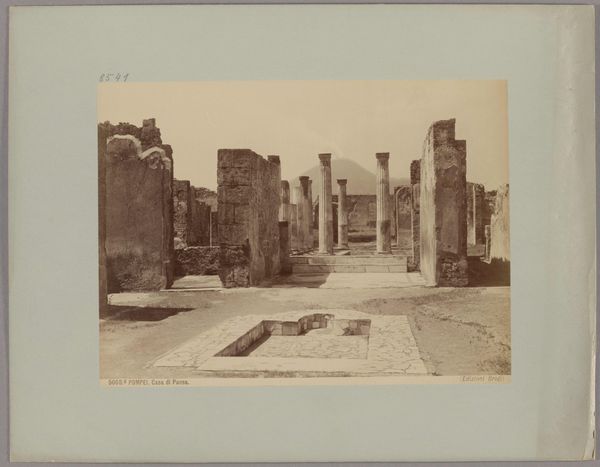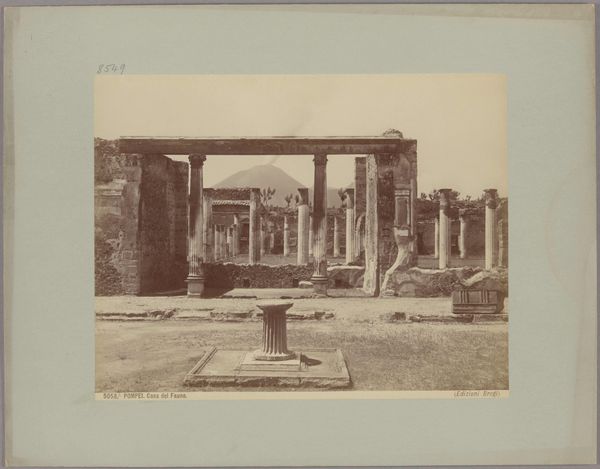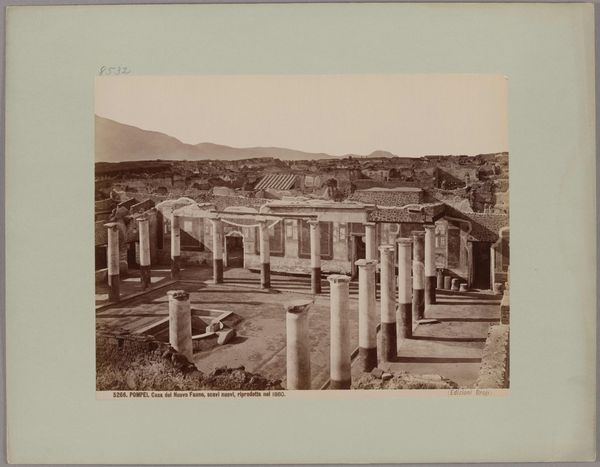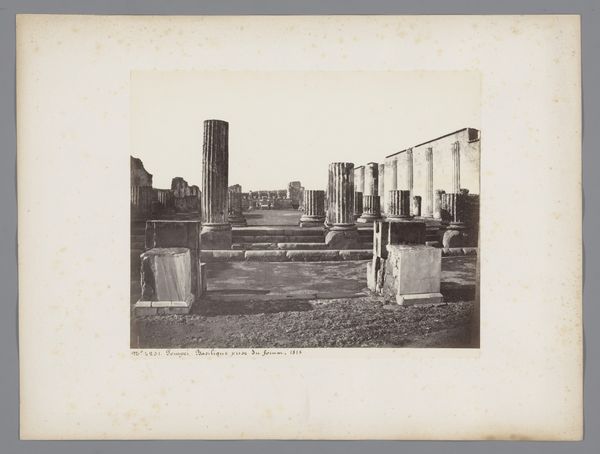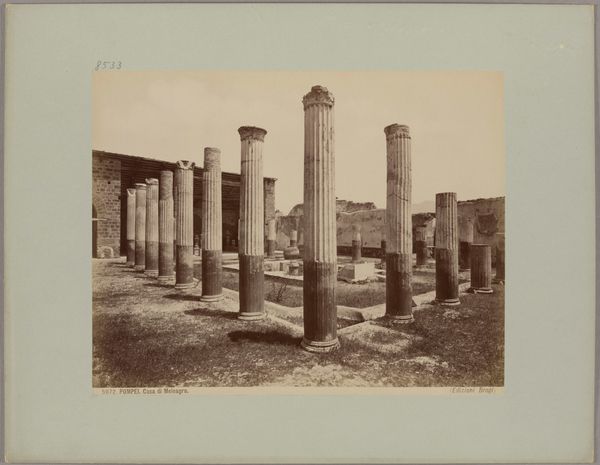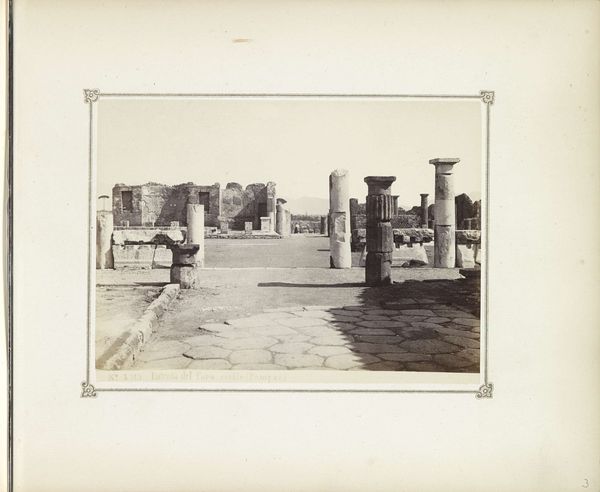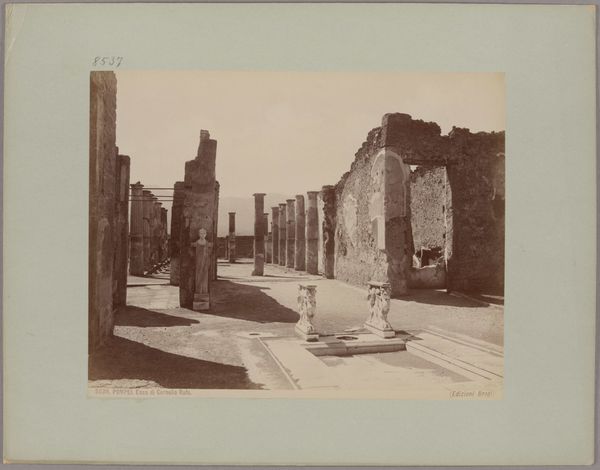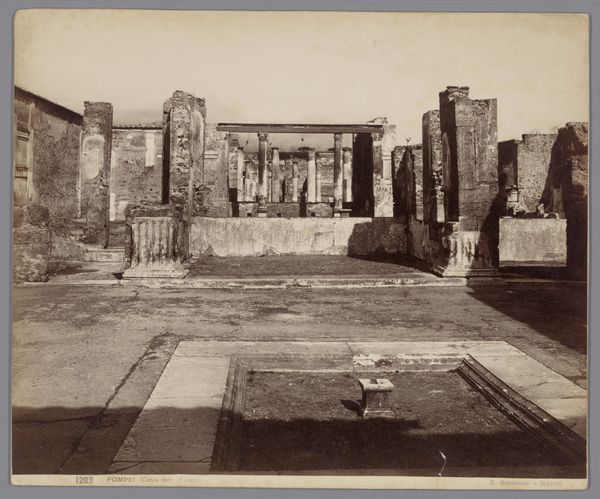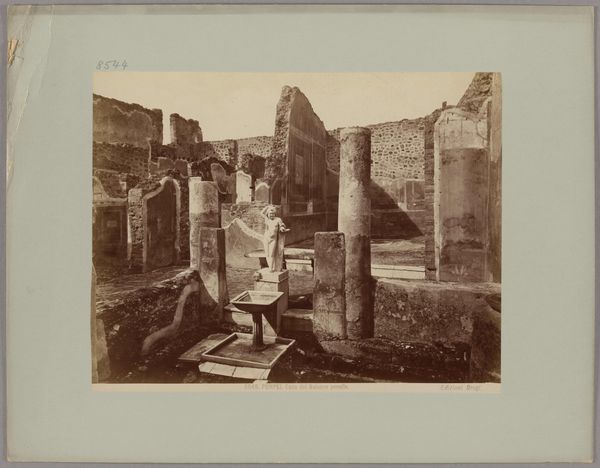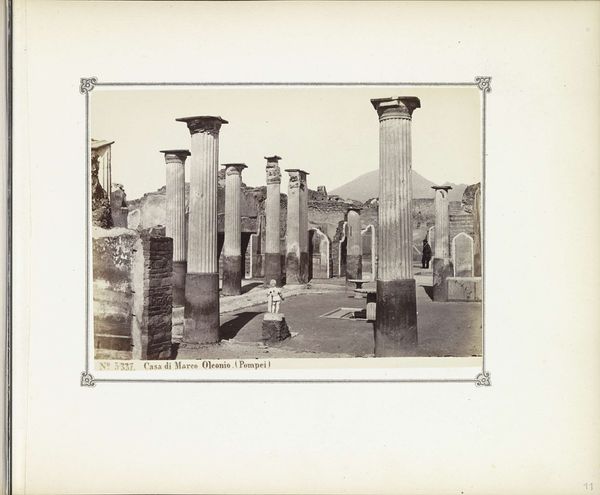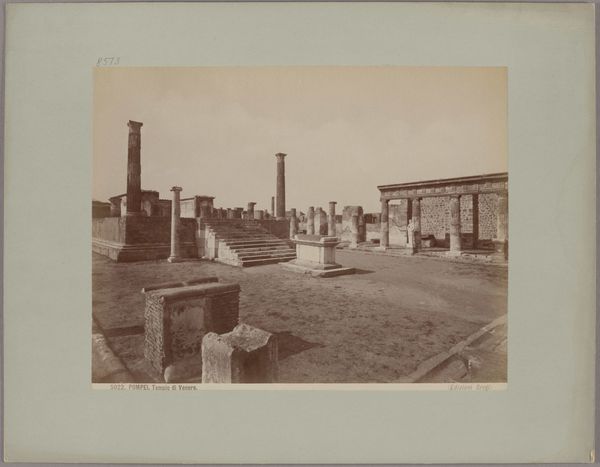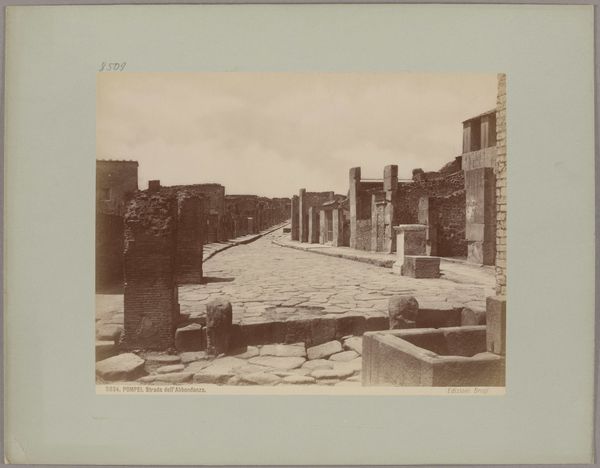
albumen-print, paper, photography, albumen-print, architecture
#
albumen-print
#
landscape
#
paper
#
photography
#
ancient-mediterranean
#
column
#
albumen-print
#
architecture
Copyright: Public Domain
Curator: This photograph by Giacomo Brogi, titled "Pompeii, Foro Triangolare," dates from about 1880 to 1890. The albumen print captures a view of the ancient ruins. Editor: There's a melancholy beauty to it, isn’t there? All those fractured columns standing against the relentless sky. It speaks to the ephemerality of empire. Curator: Precisely. Brogi was working at a time when the ruins of Pompeii had become a site of intense historical and archaeological interest. Photography served as a tool for documentation but also, importantly, for popular consumption. These images were widely circulated, shaping public perception of Roman history. Editor: I think it’s fascinating to consider the colonial undertones as well. European nations used archaeological discoveries, including sites like Pompeii, to position themselves as the rightful heirs to classical civilization. There is power imbued with controlling not just history, but who writes the next chapter. Curator: Absolutely. This is no straightforward historical record. Brogi frames the scene carefully, emphasizing the grandeur while also hinting at the city’s tragic end. It catered to a Victorian-era audience fascinated by the rise and fall of civilizations. Note how the light and shadow dramatize the scene. Editor: What interests me particularly are the absences. Who walked here, and what does it mean to claim to inherit or preserve ruins with broken pillars that hold such stark reminder of systematic cultural erasures? Curator: And Brogi's technical choices speak volumes, too. Albumen printing, with its rich tonal range, gives the ruins a sense of depth and texture. It almost romanticizes the decay. Editor: Right. A romanticized decay, devoid of true reckoning of cultural cost and its continuing impacts on those with diasporic and indigenous connections. I find that tension, the beautiful ruin as colonial relic, incredibly compelling. Curator: Indeed, seeing it in its broader historical context offers such depth. Editor: Exactly, there is so much more beyond just documentation to view and dissect when visiting a work.
Comments
No comments
Be the first to comment and join the conversation on the ultimate creative platform.

